Creating a Wi-Fi teapot “for dummies”: how we did not tear Kickstarter (for now)
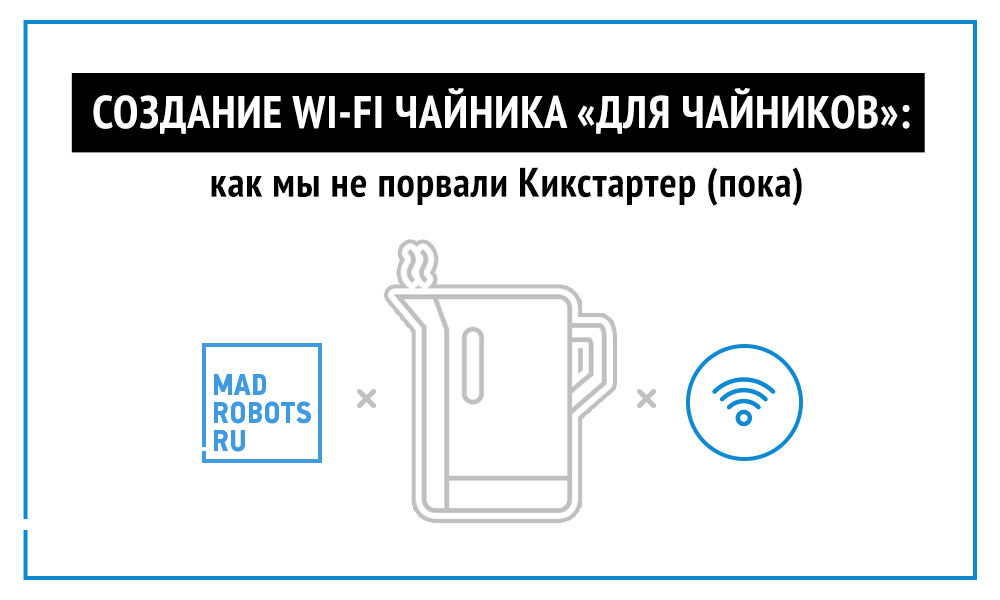
I dreamed of not selling - I dreamed of doing. Create different electronic things that really change people's lives for the better. This dream came to me a long time ago and in many respects determined my professional path. For many years she was waiting in the wings. And an hour struck when I created Madrobots .
For someone, it was just another online store with cool stuff. For me - a chance to make a dream come true. Having created a powerful marketing channel for selling gadgets from the world of the Internet of things, I dreamed that I would be able to start producing them myself, first in Russia and then around the world.
Crowdfunding paved the way for unburdened inventors. While corporations made their televisions and coffee makers “even better,” American crowdfunders presented the world with Pebble, Alpha Mio, 3doodler, and other cool gizmos.
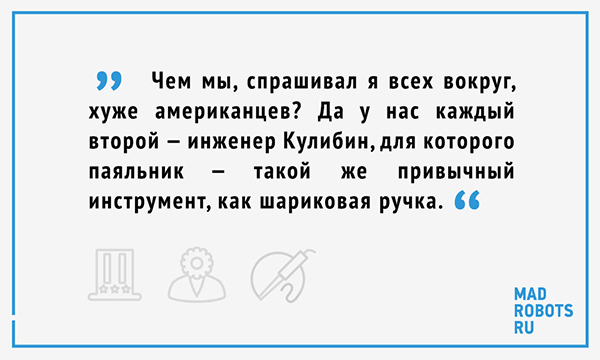
And China, where all these innovations are made, is even closer to us. What prevents, I said, doing the same thing that the Americans are doing?
What is stopping us, I learned when I started developing a Wi-Fi kettle, which was supposed to conquer the world and become the first Madrobots project to break Kickstarter.
BIRTH OF LIFE
I would not exaggerate at all if I say that the Wi-Fi project of the teapot spontaneously spawned on Habr. Although not without the participation of the popular habrayuzer vvzvlad (in the world - Vlad Zaitsev).
Vlad then lived in Vladivostok and worked as a jack of all trades at the local event agency, and at leisure he was fond of studying various non-trivial iron. He stood at the head of Box Overview - a team of bloggers who made reviews of various electronics on Habré.
One day he undertook to study the possibilities of a new debugging board from Texas Instruments and wrote a post on how to use it to turn on and off the mains voltage through a web application, and thus control any electronic device - well, at least a teapot, for example.
Wrote - and forgot. Eight months later, a stranger from Moscow contacted Vlad and offered to develop a “smart” teapot, which could be turned on remotely, from a smartphone - say, when you are too lazy to get out of bed and wait until the water boils.
From such an offer, as Vlad later recalled, he simply went nuts: it was, of course, interesting to make a kettle and go to work in Moscow. The investor promised to equip the laboratory, rent housing ... The
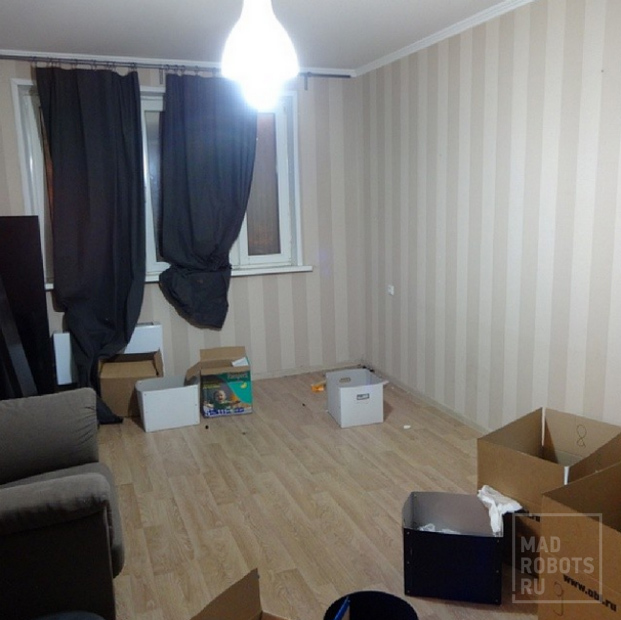
apartment where the first prototype of the Wi-Fi kettle was developed.
True, the proposal had obvious drawbacks: Vlad just recently got married, raised a small child, built himself up in a new apartment in Vladivostok ... And now it was necessary to break away. Who knows how serious the investor is and whether he will cool off in a couple of months to the idea?
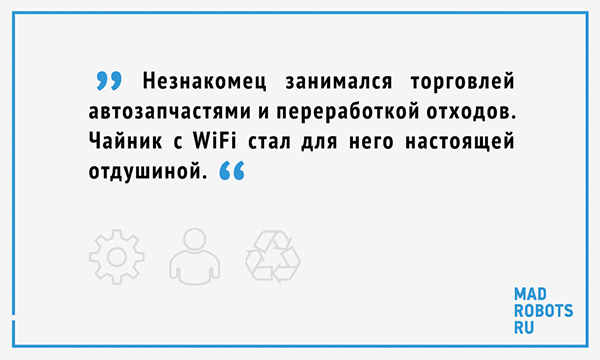
It was both good and bad. The good thing was that after two months he still had not lost interest in the project. It is bad that he was burning with his idea, so he took a direct part in the work. Screen prototypes of the kettle control application As a result, inventors, as Vlad recalled, spent a lot of time arguing on secondary issues (what a button should look like in a smartphone application and how many presets there should be for different types of tea). Designing a mobile application Disputes are good if they are the case. And if not, then they just burn the money that you have to pay for renting a laboratory (a two-room apartment was equipped for it).
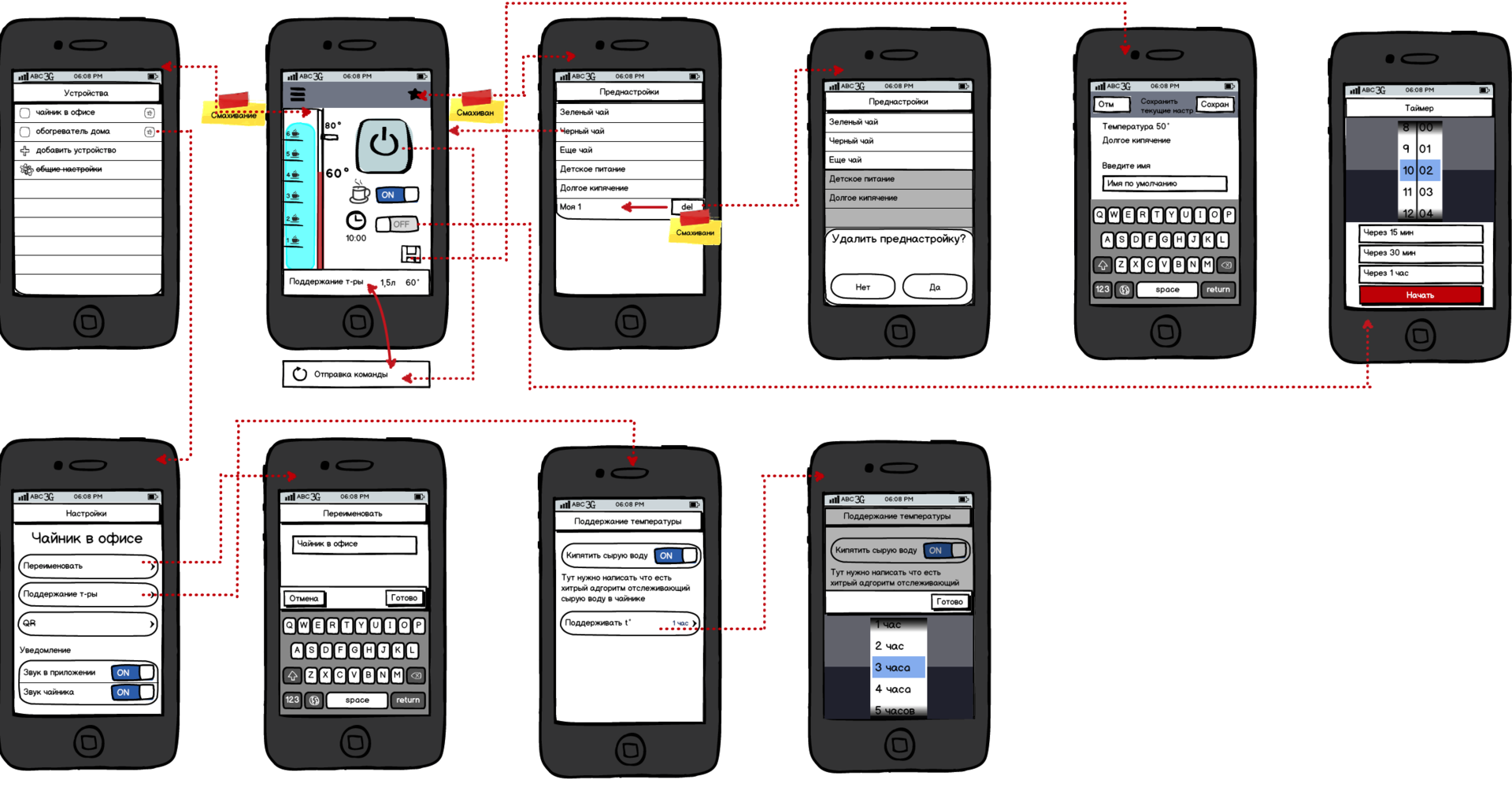

It took half a year to create a prototype, design, technical description, test version of the application, as well as clarify various details. Even the implementation of such a simple, it would seem, an idea, like a Wi-Fi kettle (it's still not Pebble), in fact, turned out to be a difficult task. Especially if you set a goal to give the user full control over the temperature of the water.
For example, it was necessary to take into account that after turning off the heating element, it continues to give off heat - therefore, turning off the power at 45 degrees, in reality you will get water at a temperature of 55 degrees. So, you need to create a system of amendments for different volumes of water and introduce it into the system.
Since the inventors wanted to create the perfect product, there were a lot of details that needed to be thought about. Nevertheless, everything went relatively well - until Elvira Nabiullina was appointed head of the Central Bank.
ELVIRA AND KETTLE
At the end of last year, the Central Bank, led by Nabiullina, began to cleanse the financial market from banks that engaged in cashing and other dubious operations.
And what about the kettle? He became an accompanying victim of this great political process. The investor kept the money in a bank, which turned out to be one of the victims of the sweep. Man has lost a lot. To close debts, he had to sell one of his businesses.
As luck would have it, at the same time, problems began in another of his enterprises: a huge warehouse burned down, which contained old automobile rubber intended for recycling.
It burned for a long time. Vlad recalled that a few days later, caustic smoke still rose above the remains of the warehouse.
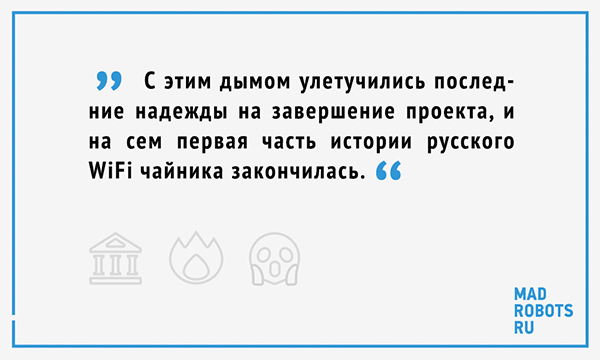
The money ran out, the investor spread his hands. Vlad had to pack his things and return home - or look for a new job in Moscow.
By that time, we were already familiar with him and maintained relations. I liked how Vlad writes, and we began to correspond, even when he was still living in Vladivostok.
Of course, I was interested in the fate of the teapot, and as a devoted fan I followed the progress of the project. Shortly before the crash, we even met with the first investor to discuss possible ways of cooperation, but we could not agree on anything.
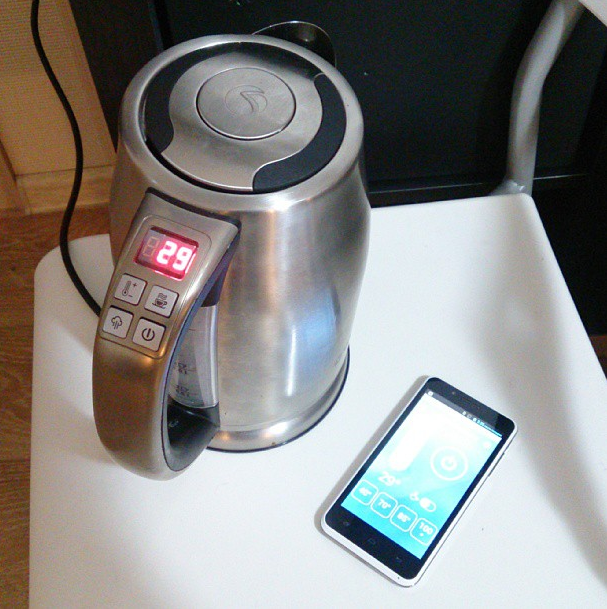
Prototype wi-fi teapot based on Vitek
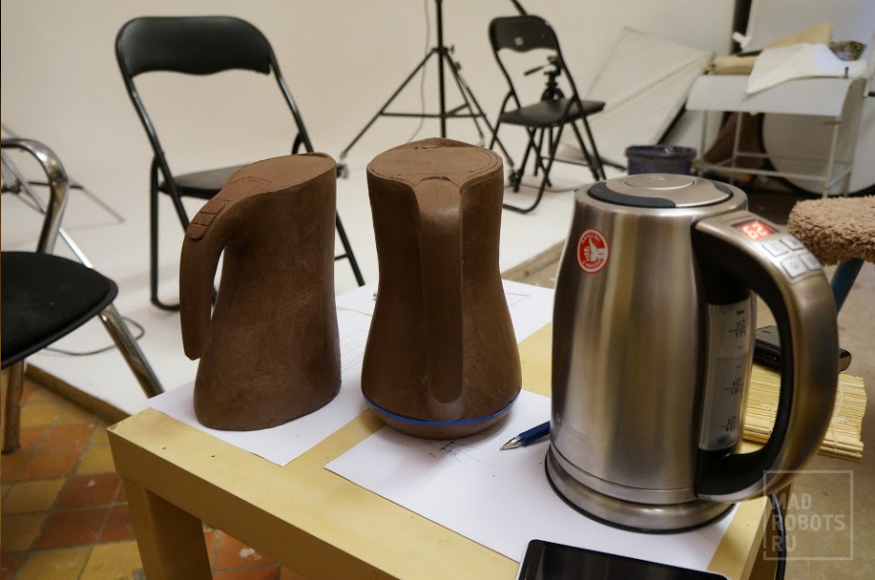
teapot A teapot design developed together with an investor
At the meeting, I asked them uncomfortable questions about the possibilities of the teapot and its future market promotion. And, obviously, he made a bad impression on the investor.
As Vlad later told, after the meeting, he said about me: “Someone Nikolai is strange, he doesn’t want to make a kettle, he wants to sell it.” On the contrary, it seemed to me that the guys were guided by their own taste, and not by the needs of people, completely ignoring the market.
Naturally, learning about the investor’s difficulties, I immediately began to think about how to save the project and thus come closer to realizing my dream. I already quit Panasonic, developed Madrobots, things were going uphill, which overwhelmed me with enthusiasm.
But I didn’t sell auto parts, and I didn’t do waste processing, and our business was just starting to get on its feet, so I couldn’t just take Vlad into the team. I needed to come up with a job for him that would pay off his salary so that he could devote part of his time while finalizing the teapot.
By a fortunate coincidence - and again thanks to Habr - such work was thought up, practically by itself. In the spring, I finally got the opportunity to open my own laboratory under the wing of Madrobots. Thanks to our indefatigable blog activity, we received a commercial offer from Mail.ru to participate in the opening of an industrial park in Baumanka .
To prepare - to assemble a chocolate printer or a robot playing air hockey - without such a person as Vlad, there was simply no way for such a project. I saw a prospect in the technology show market. Therefore, he suggested that Vlad finish the development of a smart kettle under the wing of Madrobots.
So the Russian Wi-Fi kettle got a second life.
SAME BUT BETTER
Rested Vlad with renewed vigor set to work. He made a second prototype and undertook to debug various details, improving the first development and making changes to the design. I, in turn, took up the marketing part.
My predecessor in the development of functionality was guided by their ideas about the beautiful. He developed a design for a teapot that no one liked except himself.
Once again, the first version of the design of the kettle.
I also wanted to make the kettle as attractive as possible for the market. So the idea came up not only to change the design, but also to make the kettle really “smart” - to install, for example, a water quality sensor in it.
Vlad took several weeks to work out this issue. Even then, it became clear that the scheme I had invented had many flaws. To pay off his salary, Vlad had to devote most of his time not to a teapot, but to other duties at Madrobots. They brought us money, but did not bring them closer to triumph on the Kickstarter.
As a result, I still had to abandon this idea of analyzing water quality, although it seemed to me very profitable from a marketing point of view. Such a sensor increased the price of a teapot by one and a half times. But I did not want to raise her.
I was captivated by this picture: here’s a store shelf, here’s an ordinary Bork teapot on it, and next to ours, which looks no worse, but costs the same. And he is also smart, with Wi-Fi inside. How can you resist here?
Six months ago, I really believed that it was quite possible to make a smart kettle at a comparable price. After all, even companies such as Bork, although they sell a lot of teapots, but each model is ordered in not so large batches.
So, I dreamed, we could well compete with them. The fee is not so expensive. A small, but dynamic company may well get around a clumsy monster.
However, the further we moved, the more we realized how naive our ideas about how and what was being done in this market were.
Vlad spent considerable efforts on developing the design of the teapot: he found a designer who molded a three-dimensional model, prepared documentation on the basis of which the design bureau could “cut” the teapot into pieces ...
It turned out that all these efforts were spent in vain. To release a teapot in your design, you need to order your own molds. And this pleasure will cost you an extra three hundred thousand dollars.
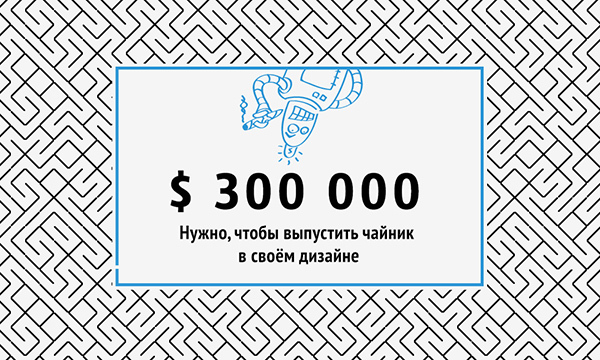
For a startup like Madrobots, this is very serious money. In addition, you will have to lay the extra investments in the price of the kettle. And any increase in retail prices reduces possible sales.
If the developers were smarter, they would go the other way. After all, no one usually does their own design for a batch of ten thousand pieces. Why, if there are many options already made, from which you can simply choose the right one?
Like most inventors, evaluating the prospects of the project, at first I did not understand that the costs of the project are always greatly underestimated - as well as the upcoming Olympic construction projects or estimates for apartment renovation.

KISSTARTER LOOKING GLASS
But these difficulties would probably not undermine my faith in myself, if at the same time, thanks to the development of Madrobots, I did not get the opportunity to talk with successful Kickstarter stars and look behind the scenes of crowdfunding.
The legend sounds extremely attractive, we all know it: come up with a cool idea, work through its implementation, launch a campaign - and collect the money. No need to sell your apartment, no need to beg for money from business angels and venture investors - here it is, the paradise of the innovator.
In fact, to really raise serious money, just a beautiful idea and a convincing presentation is not enough. We also need serious support for parties, media and venture financing.
Most people who succeed on Kickstarter are integrated into the American venture capital environment. They know opinion leaders, influential journalists and bloggers who help them promote the project.
It is difficult to achieve serious success without this. Sitting in Russia and not having connections in the Valley, Kickstarter cannot be torn. A miracle, of course, can happen. But, investing hundreds of thousands of dollars, you don’t feel like relying on a miracle.
At the same time, to get a chance for a miracle, you need to spend a lot of time. Pebble started on Kickstarter in 2012, and if you don’t get into the details, you can imagine that the project is two to three years old. But before Kickstarter, there were business angels, before business angels, there were seed investments by Y Combinator.
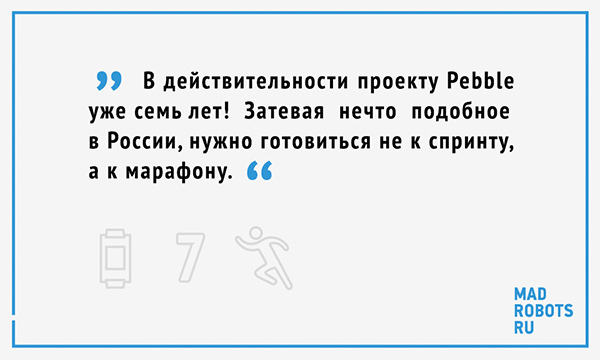
And over the years, competitors can easily get around you. While the Russian Wi-Fi kettle was being developed, the British company Smarter Applications announced its gadget . His release was postponed many times, but this year it finally came out and began to be sold in the English Amazon.
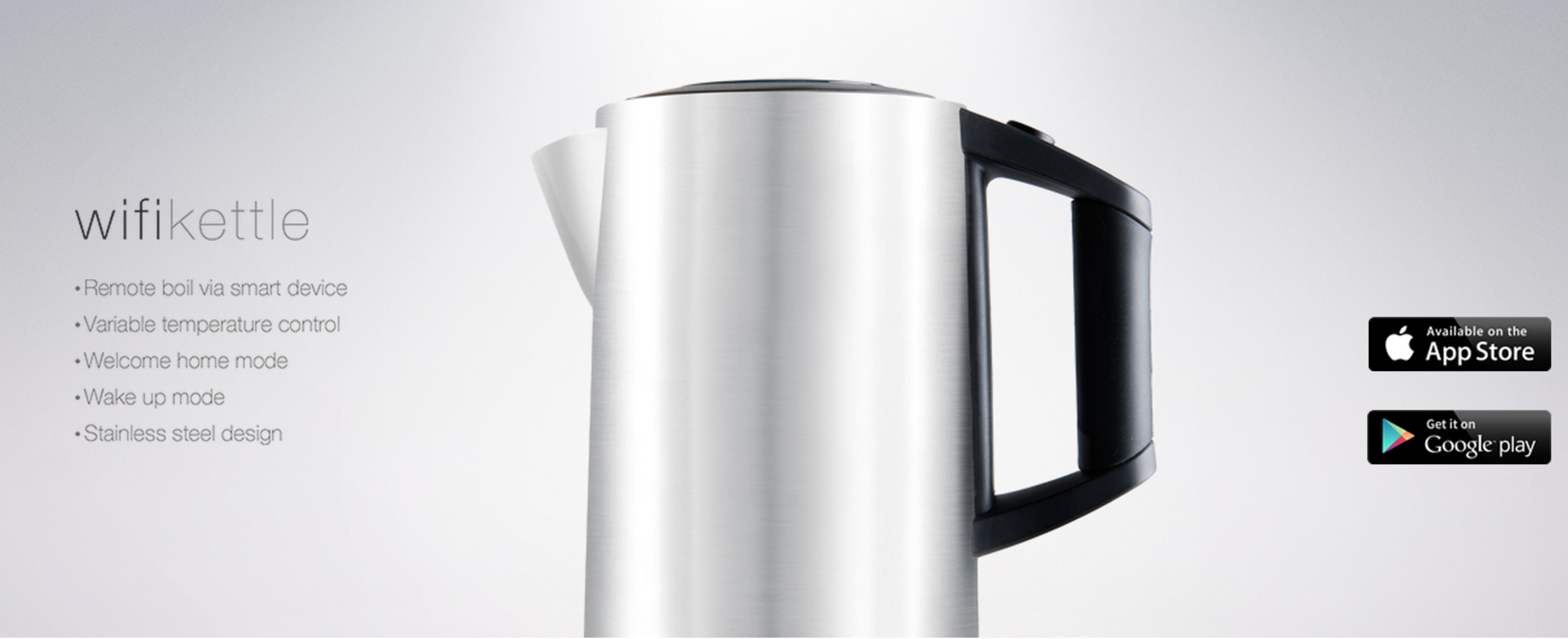
The functionality of this kettle is poorer than ours. You can only choose between four temperatures. In fact, this is an ordinary electric kettle, only with remote control.
We still have a teapot that is not remote, but smart: the user can set any temperature (you need your own for different types of tea) and any work schedule.
But where is the guarantee that British competitors are not working on a new version in which our ideas will be embodied? They have already gone all the way to the end - to the idea to the shelf - which means they better understand how everything works - how to make not only a prototype, but also put it into series.
iKettle scolded for terrible glitches, the complexity of the settings and wretched features. But this teapot has a big advantage over ours. He is already for sale. And ours is not yet.
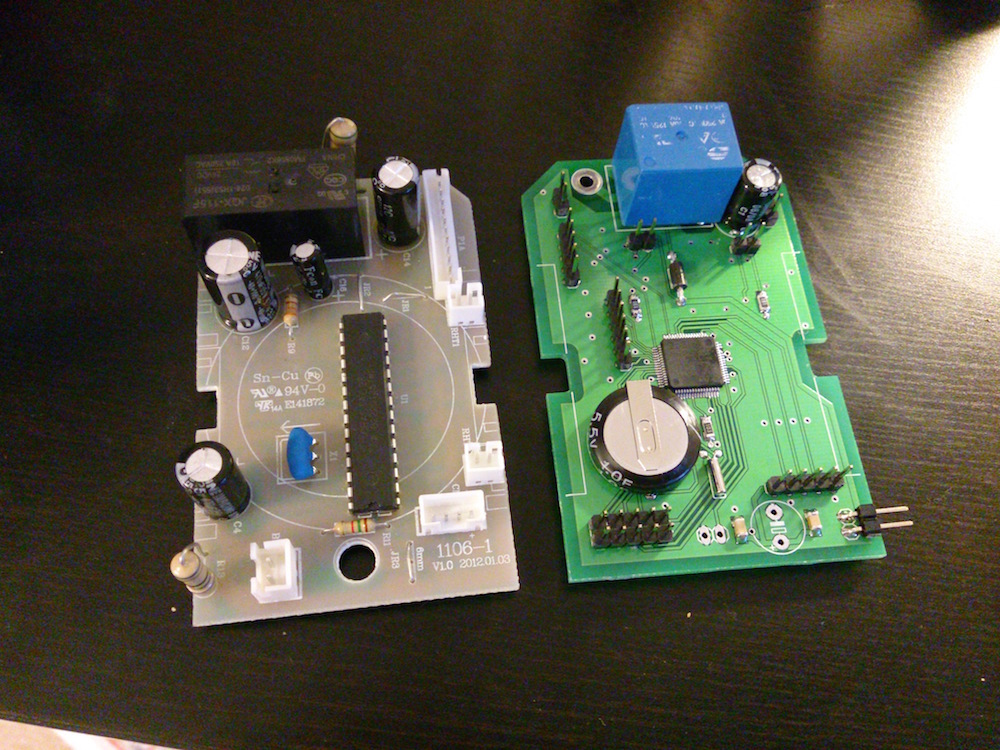
KETTLE OR LIFE
And whether it will be sold, I do not know.
I believe that all problems are surmountable. Indeed, thanks to some romantic naivety, lack of understanding of all difficulties and faith in one's own strength, the majority of successful companies created by visionary entrepreneurs appeared.
It’s difficult to find a way to join the American party - but you can still figure out how to do it. And that means raising money is a solvable task.
And the venture capital market is not the only crowdfunding: there are many investors in Russia who are not averse to investing extra money in something brain-intensive. And for two dummies with wi-fi in the world market there is certainly a place.
But I understand that in order to deal with such projects and make them successful, I need to dive into them with my head.
My main task is to ensure sustainable growth for our online store amid a stagnant, if not collapsing economy. And every minute that I don’t think about this task, I reduce my chances of success.
Developing innovative stuff is great. But this is a risky business, the return on which will come in many years.
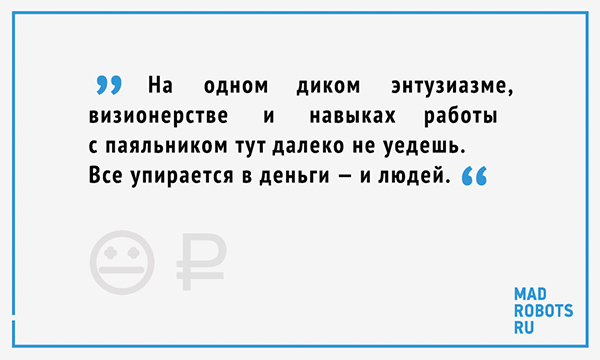
Perhaps more in people. Vlad is a talented engineer, unlike other Russian craftsmen, he is interested not only in high technologies, but also in their commercial application. But even he is not able to simultaneously take over the marketing, finance and production of such a complex project.
In addition, perfectionism greatly interferes with him: he wants to do the perfect thing - or not to do any. But even the first iPhone was far from ideal, and the market does not need an ideal, but just a good enough thing that people would be willing to pay for.
To implement such a project, you need the competence of an experienced manager who would understand the topic, possess the necessary entrepreneurial qualities and minimal technical competence, and at the same time have the desire and the ability to connect his fate with a teapot and crowdfunding for years.
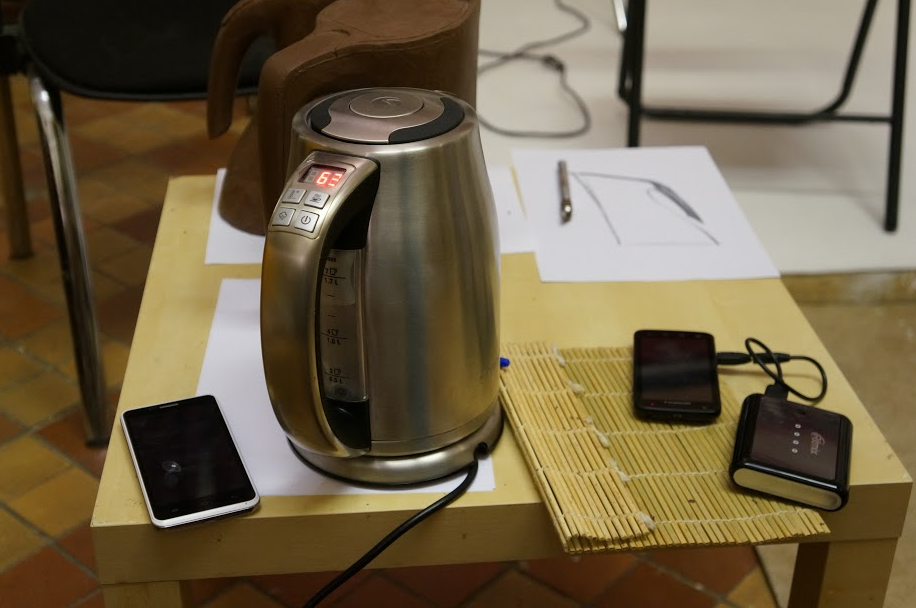
At first, I asked a question: what prevents us Russians from taking over Kickstarter and other crowdfunding sites? I think, first of all, the absence of such people prevents us.
Like many who dream of doing their innovative things in Russia, I had many illusions.
It seemed to me that a good idea and some extra effort would ensure success. Everything is much more complicated.
To succeed, you need a deep rather than superficial knowledge of the market. We need a reinforced concrete idea that your faster competitors from America or Europe will not realize the day after tomorrow.
We need serious capital, which will allow us to work on the implementation of the idea twenty-four hours a day. It is necessary to imagine how production is arranged and how it affects the economy and business model. We need good connections that will help in promoting the product on the world market.
But the main thing that is needed is the realization that the idea and prototype are only the tenth, if not hundredth, part of the path. Six months ago, I did not realize this. Therefore, my dream is still a dream. Although she became half a step closer. PS While I was writing this text, the project of the teapot went to the semifinal of the Eureka contest organized by the Innopraktika center, Moscow State University's business incubator and Gazprombank. In total, about 600 applications were submitted. 25 passed to the semifinals. The main prize of the competition was 500,000 rubles, support for scientists and access to investors. It is in words. As will be in fact, we will find out when (and if) we will reach the final. The previous parts of the Madrobots story can be read from the links: Part 1. How Madrobots was invented. Part 2. How we tried to trade iPhones and almost went broke on this.
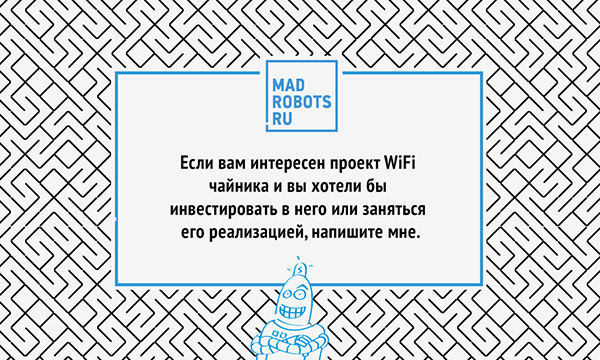
Part 3. How we played big in Vegas and brought a couple of dozens of new devices from CES 2014.
Part 4. How we opened the first Madrobots store in Gorbushka shopping center.
Part 5. The first video review of Madrobots.
Part 6. How we decided to open the Madrobots store in the MEGA Belaya Dacha shopping center. .












